- About
- Visiting
- What’s On
- Venue hire
- Catalogues
- Collections
- 101 Treasures of Chetham’s
- Digital Resources
- The Flowers of Histories
- A Book of Hours from France
- The Manchester Scrapbook
- Thomas Barritt of Manchester
- Art Treasures Examiner of 1857
- Manchester Association for Constitutional Order
- The North Western Museum of Science and Industry: Some Reminiscences by Richard Hills
- Criminal Manchester
- The Cup of Destiny
- Athenaeum Souvenir
- Middle English Manuscripts
- Manchester and Liverpool of Today
- Hollingworth’s Mancuniensis
- Memoir of Cecil Wray
- William Seward’s Diary
- The Anti-Monopolist
- Fishwick’s History of Rochdale
- Knyvett’s Defence of this Realm
- Tractatus de Nigromantia
- Axon Ballads
- Printed Books & Ephemera
- Archives & Manuscripts
- Prints and Photographs
- Blog
- Support us
Blindingly good news
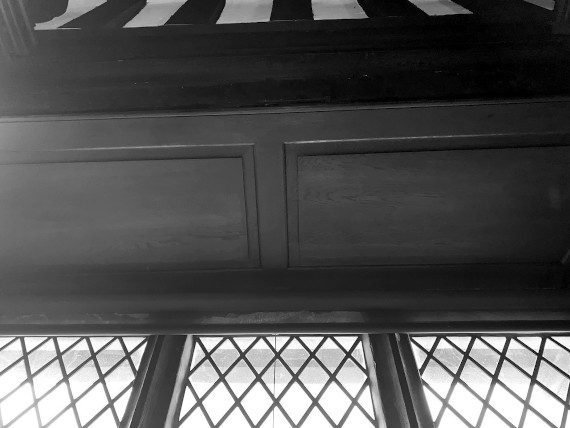
Some of you will remember the recent blog post covering conservation and how we care for the books and library space. In this post we will be discussing our recent installation of conservation blinds within the library and the negative impact sunlight has on historical objects. We would also like to extend warm and heartfelt thanks to the DCMS/Wolfson Museums and Galleries Improvement Fund whose generous support made it possible, among several other equally good things, for us to acquire and install the specialist conservation blinds.
The Fund and DCMS staff made it easy for us as an outfit with a very small staff to work with them, and were generally lovely. We’re also grateful to Mark Pearce of KPS architects, H. Lord & Son, Joiners, and Sun-X, all of whom worked with us to make the project a success under the tricky constraints of a 1420s, grade-one listed building!
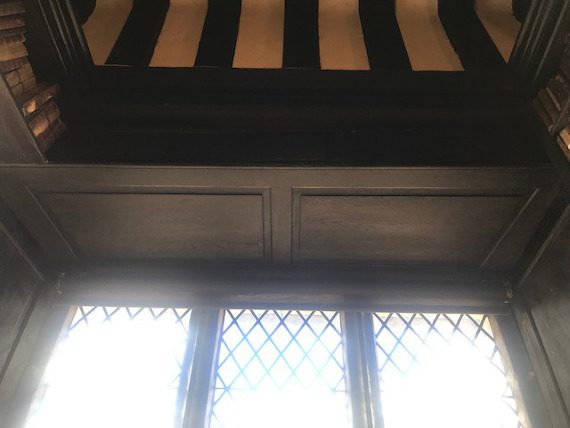
The notoriously strong Manchester sunshine pouring in – nice for people, not for books
The installation of these blinds falls into the preventative conservation category as they help to prevent the damage to our books caused by sunlight. They are made from a material that allows visitors to still see out of the window but blocks harmful UV light. In conservation terms, the exposure of historic objects to sunlight is referred to as lux levels. Lux hours is the unit used to measure the time of exposure of objects to light. In the museum environment light sensitive objects have recommended light levels allocated to them. The highly sensitive objects which include paper and dyed leather is 50 LUX, whereas moderately sensitive items are allowed 200 Lux.
The library aims to keep light exposure for very light sensitive material to below 150,000 lux-hours per year and for less sensitive material to below 300,000 lux-hours per year. This equation is based on the average opening times of museums in the UK being 3000 hours per year, for example 50lux X 3000 hours = 150 000 lux hours. This is monitored and recorded through our light plan and hand-held Solex Digital Lux Meter.
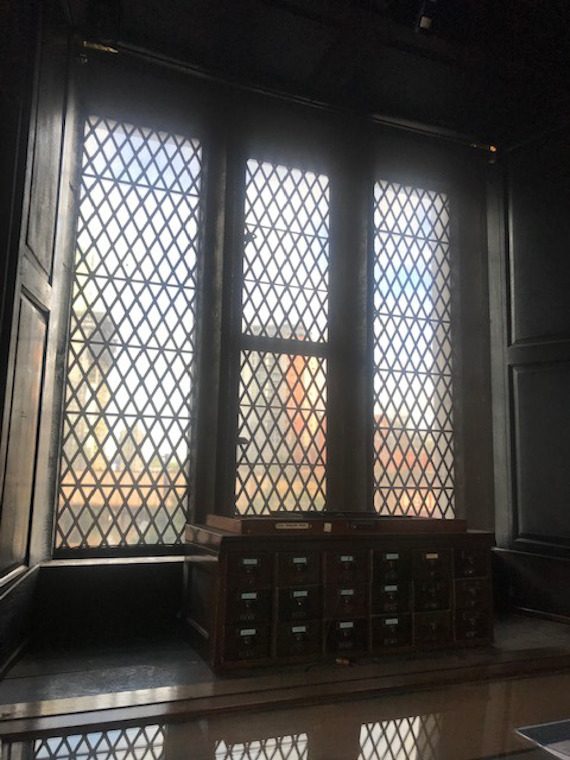
A new Sun-X blind in place – UV greatly reduced, but the view still there
This brings us to the importance of our conservation blinds; these have been created with the express purpose of limiting lux levels within the heritage environment. The company used was SunX, whose products are created to National Trust specifications and are tailored to suit individual requirements. They are unique in that they are very discrete and do not impact on visitor experience once in place.
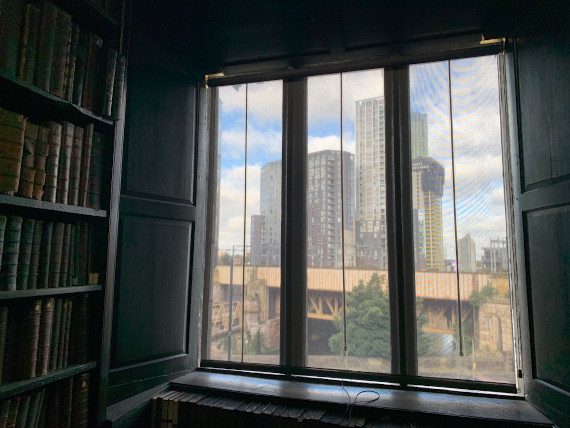
The blinds actually improve visibility of the building and collections by reducing glare
Due to the library being housed in a 15th century building, new panels had to be added to our window frames not only to hold the blinds securely, but more importantly to replace the nasty, black-painted hardboard that had been substituted some time in the 20th century for the original oak panels in the window heads. The City Council Conservation Officer mandated (as appropriate for a grade one listed building) that the hardboard had to be replaced with hand-made oak panels. Architect Mark worked with Lord and Son to get these made – as always in the medieval building, no two panels were quite the same!
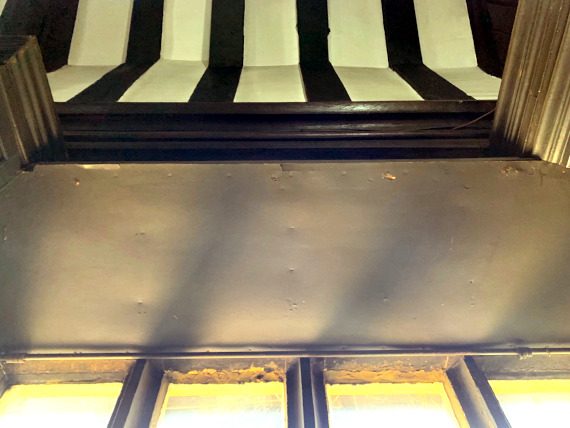
Before – crumbling hardboard tacked over the medieval roof timbers and painted black
This involved a new panel for almost every window in the two wings of the Library, and great was the amount of dust and number of old birds’ nests that came down with the hardboard.

After – handmade oak panels match the few existing originals in the window-heads, and the panelling in the reveals
It has been a lot of work! However the results are virtually invisible, provide the gold standard in conservation care regarding light exposure and Lux Levels, and will improve the visitor experience by making it easier to see what’s on the Library’s shelves.

